Wallpaper is a quick and relatively inexpensive way to update the interior of a living room. With a wide variety of shades, patterns, and textures, you can transform a room, visually expand it, and make it cozy and stylish. To avoid getting lost in the huge assortment available at hardware stores, we suggest you familiarize yourself with the types of wallpaper, learn the pros and cons of each material, read recommendations, and see photos of the best examples of living room design using them.
Types of wallpaper for the living room, their advantages, and disadvantages
Paper wallpaper
Paper wallpaper is the most affordable option. Its low cost makes it suitable for rental apartments, dormitories, or simply for those who like to change their wallpaper every two to three years. Depending on the type of paper, the wallpaper can have a matte or glossy finish.
People refer to thin single-layer wallpapers as simplex, while they call the double-layered ones, composed of a dense substrate and a decorative front side, duplex. Duplex wallpapers resist moisture better, making them less likely to tear during application and better at hiding wall unevenness.
The benefits of paper wallpaper include low cost, eco-friendliness (it allows air and water vapor microparticles to pass through well), and a wide range of patterns and colors.
To apply paper wallpaper, the walls must be perfectly even.
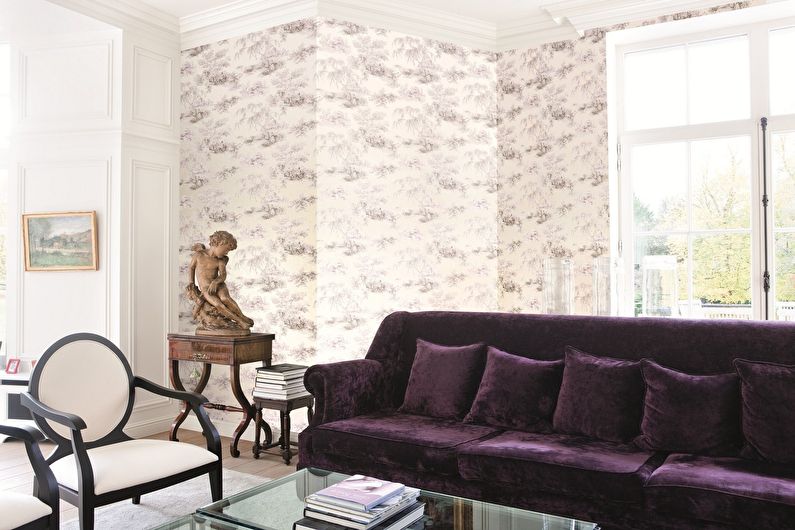
Vinyl wallpaper
Such wallpaper is made by applying a synthetic material, polyvinyl chloride (PVC), to a paper or fabric base. It can be smooth, rigid, foamed, or embossed (silk-screened). The resistance of PVC to moisture makes this material an optimal base for painting, and its low weight and mechanical strength make it easy to attach to walls. The high price is justified by a long service life – from 10 to 20 years, and the ability to repaint.
Vinyl wallpaper is resistant to moisture, elastic, durable, and able to hide small wall imperfections. 3D patterns and beautiful textures make them a very aesthetic form of decoration.
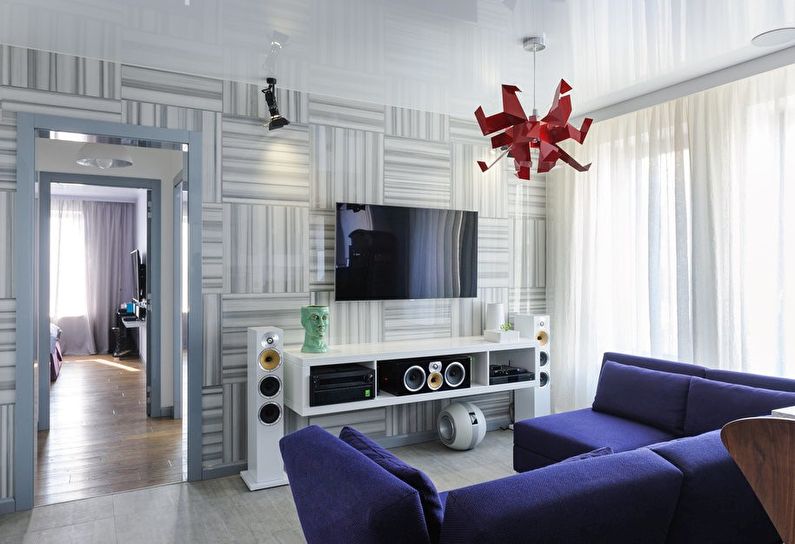
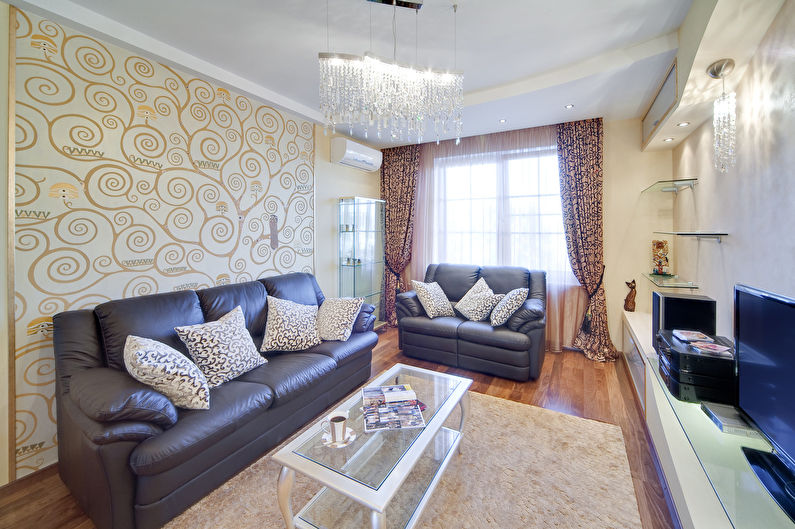
Textile wallpaper
Using fabrics to decorate the walls of a living room is not a cheap pleasure, but their stunning appearance is worth it. Linen, satin, silk, velvet, with amazing patterned interweaving of threads – they make the interior truly luxurious.
Textile wallpaper requires very careful care – they should be protected from UV rays and moisture, and cleaned carefully. The eco-friendliness of such decoration depends on the chosen material, but in general, textiles allow air to pass through well.

Glass wallpaper
Manufacturers weave these wallpapers from the finest glass threads, creating a very strong, translucent fabric with a relief pattern. You can firmly attach this type of wallpaper over plaster using starch paste, and you can paint it multiple times.
The advantages of glass wallpaper include eco-friendliness (they contain only natural materials such as quartz sand, limestone, soda, and clay), fire safety, and durability (up to 30 years of use).
Disadvantages include relatively heavy weight and limited texture options.
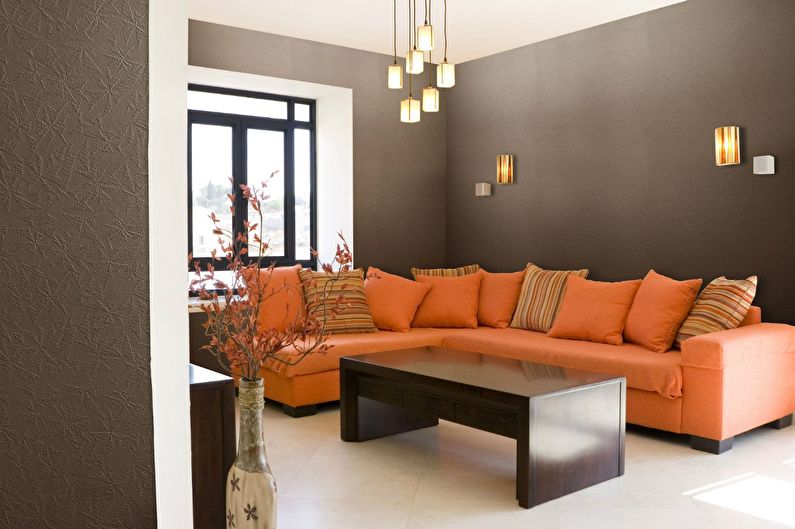
Liquid wallpaper
They can also be classified as decorative plaster, as liquid wallpaper is essentially an acrylic solution with the addition of natural fibers (cellulose, sawdust, cotton, silk) and pigment.
This type of finish allows you to hide initial wall imperfections, create an interesting texture, and paint walls with a colorful gradient. Liquid wallpaper is easy to apply and remove, has a beautiful relief, and evens out the wall surface. The mixture can include glitter, small stones.
The downside of using liquid wallpaper is their low resistance to moisture.
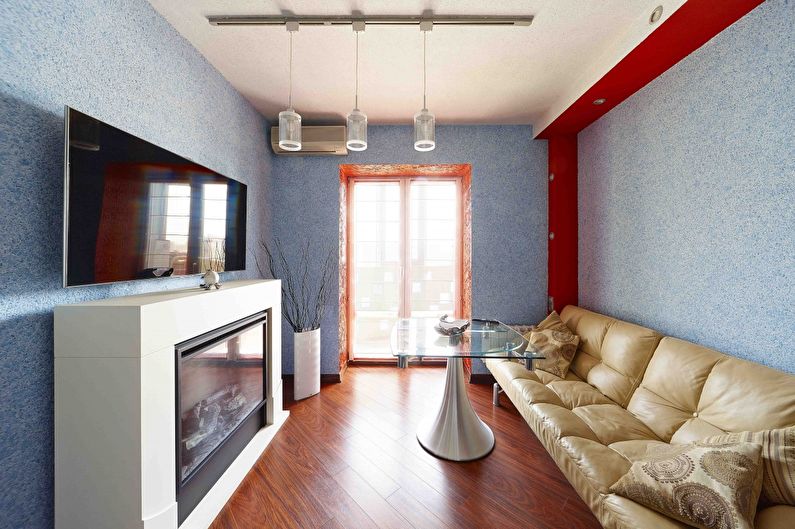
It’s all about style!
The huge variety of wallpaper types allows you to find the perfect solution for any interior style. Read on for some tips on different styles!
Wallpaper for a living room in a modern style
Modern style involves restrained design in monochrome colors. For a living room in this style, solid-colored or wallpaper with a subtle graphic pattern (diamonds, circles, lines, abstractions), imitation polished marble or metal, would be suitable. An interesting addition that creates a visual perspective could be photo wallpaper.
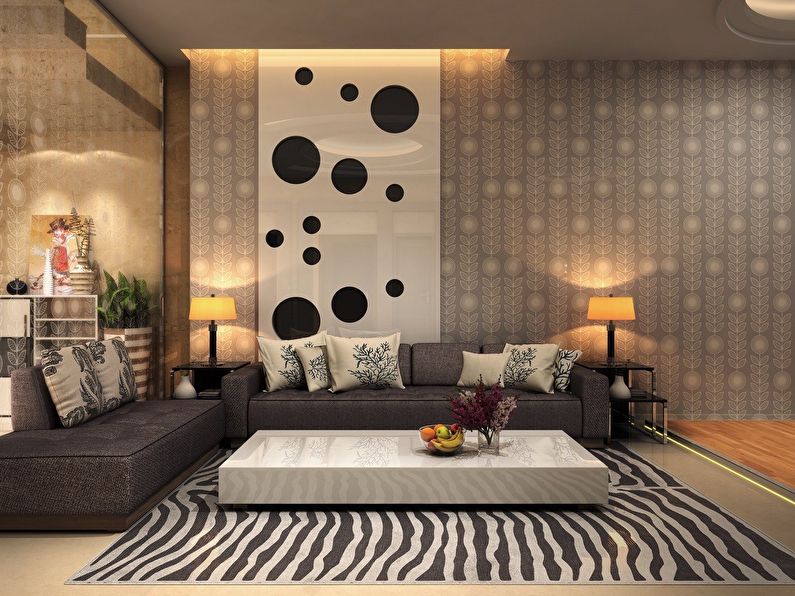
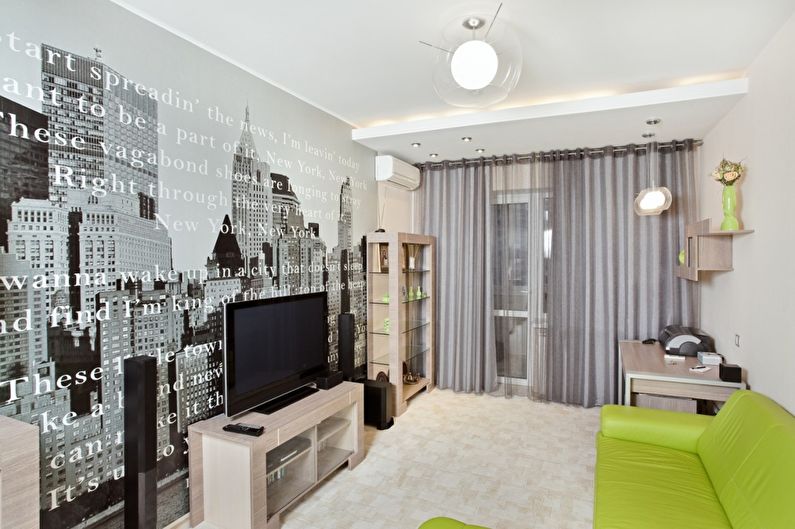
Wallpaper for a living room in a classic style
In a classic living room interior, light wallpaper with a gold or silver plant ornament, repeating the texture of expensive fabrics (satin, brocade, velvet), natural sandstone, redwood, or soft leather would look harmonious.

Wallpaper for a living room in a Provence style
For a living room design in the Provence style, it is best to choose matte pastel wallpaper with a small floral print. You can frame them with solid color inserts that repeat the color of the pattern.

The main motif of the Scandinavian style – snowy rocks and transparent blue fjords – should be reflected in the wall decoration. Wallpaper can be white, light blue, gray, or have abstract patterns.
To visually expand the living room, photo wallpaper with an image of a winter mountain landscape or waterfall can also help.
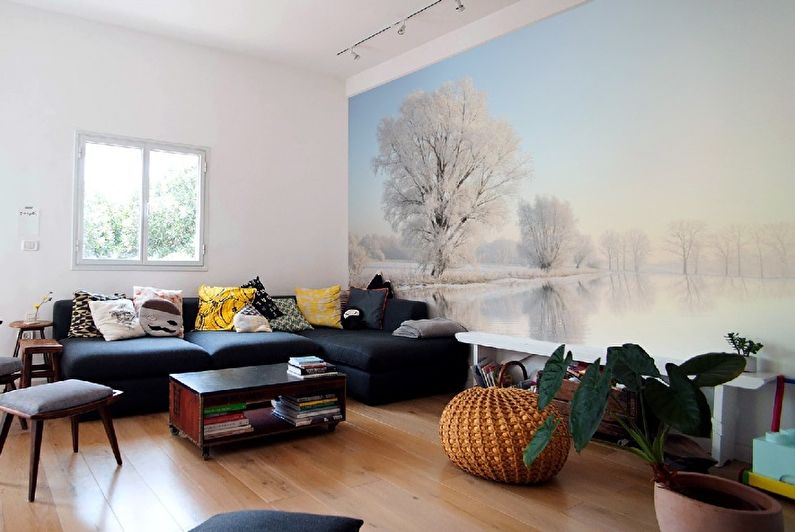
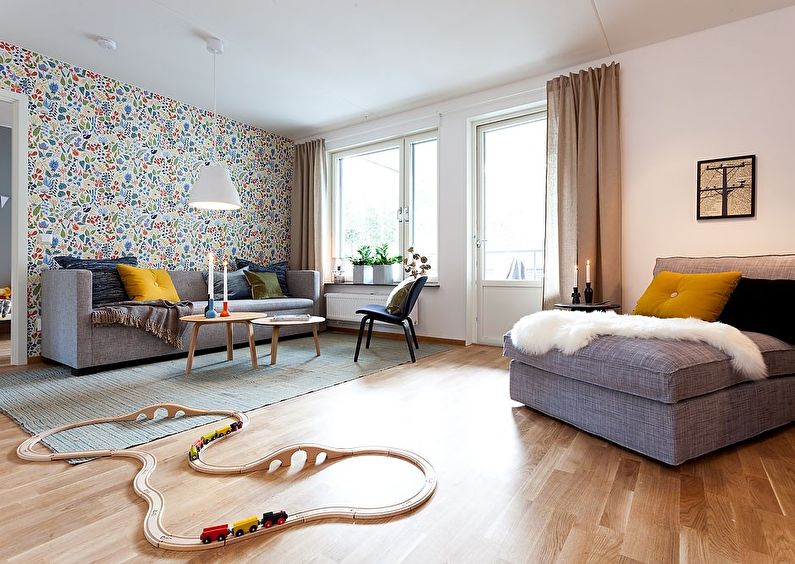
Wallpaper for a living room in a country style
This style is characterized primarily by natural materials. Imitation of stone masonry, wooden planks or logs, hay, and straw are the basic options for the country style.
Wallpaper with plant patterns, checks, images of domestic animals, birds, butterflies, pastoral scenes can help create a relaxed rural atmosphere. Photo inserts should also remind you of life outside the city: lots of sun, sky, green trees, vast fields, and horses.

Color Solutions
White Wallpaper
White wallpaper in the living room is an elegant, unobtrusive background for brighter decor and furniture. They are always appropriate, visually expand the space and give it a soft glow.

Gray Wallpaper
A neutral palette from silver to graphite is perfect for creating a monochrome design as well as softening bright accents. A living room in gray will always look modern and sophisticated.
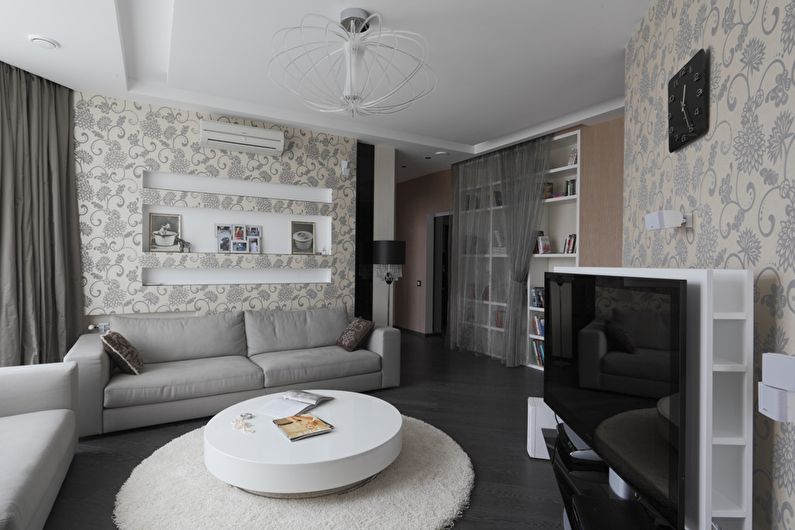
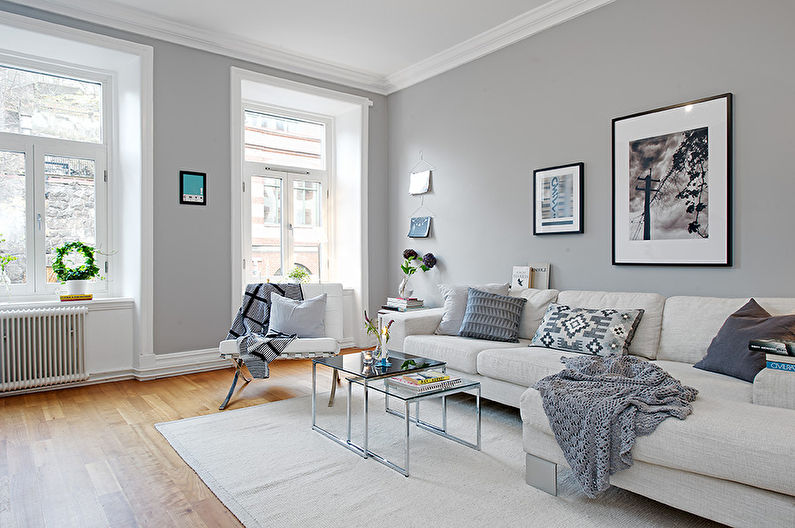
Pastel Wallpaper
Subdued, sun-faded white colors create a very calming atmosphere. Light blue, lilac, sand, beige, pink, greenish – all of them perfectly complement each other.
A living room with such wallpaper will visually appear more spacious.
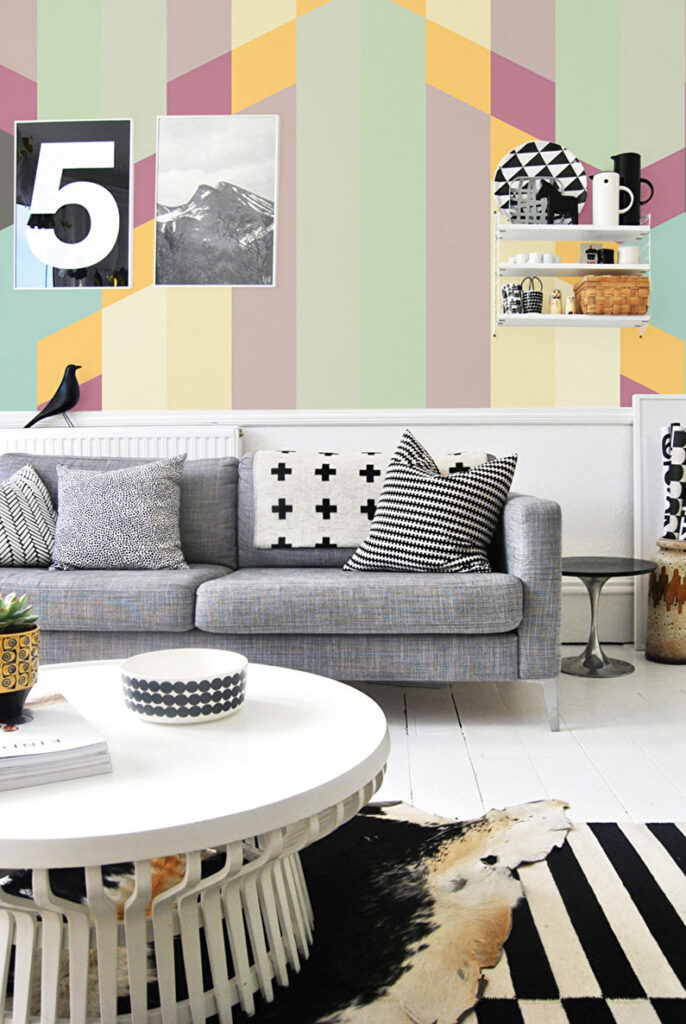
Brown wallpaper
Shades of brown are perfect for creating a cozy home atmosphere. The color of coffee and chocolate harmonizes well with the soft glow of yellow, the festive purity of white, the spring life-loving green, as well as the heavenly elevation of turquoise.

Yellow wallpaper
It makes sense to decorate the walls of a room facing northwest in shades of yellow. Banana, lemon, and orange wallpaper will fill the living room with warmth and light, and give its inhabitants a good mood.
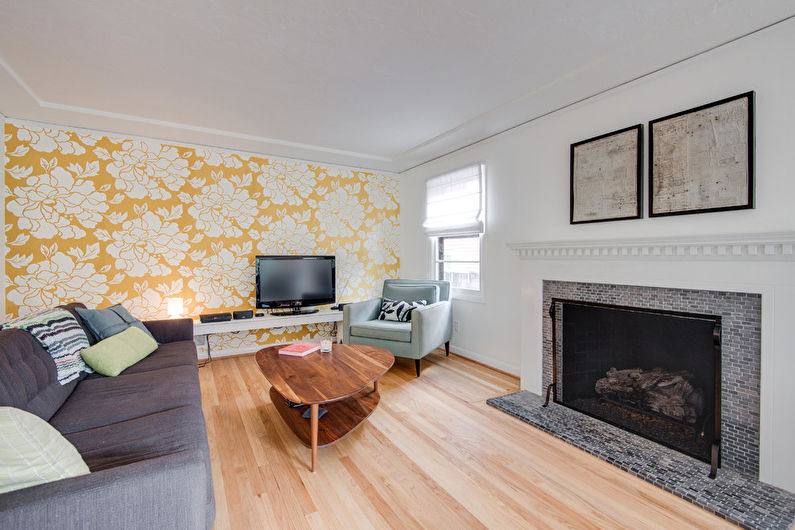
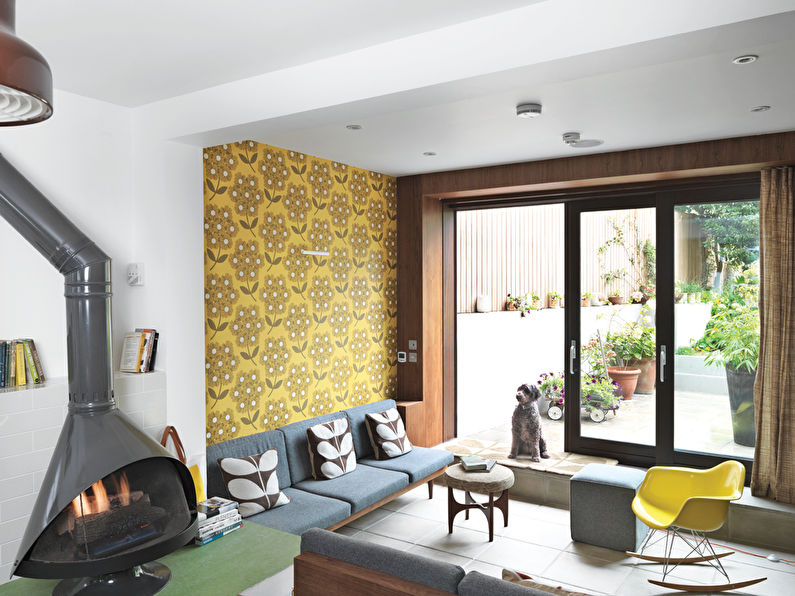
Combining wallpapers in the living room
To prevent the living room from becoming monotonous, it is worth using different elements for wall decoration. A successful combination of plain and patterned wallpapers can help beautifully divide the space, increase the height of the ceilings, widen or narrow certain areas, and highlight dark corners.
When using this technique, it is recommended to refer to a color combination chart. A uniform base with repeated patterns in lighter shades looks the most harmonious. Shiny prints reflect light and attract attention; lines visually elongate the room; and large elements fill the void of overly large halls.
Wallpapers in the living room can also be combined with painting, decorative plaster, ceramic tiles, brick or stone masonry, wood veneer, cork coating, and plastic panels. Carved wooden frames, molding (or its imitation made of polyurethane), and drywall niches can help highlight the most interesting areas.

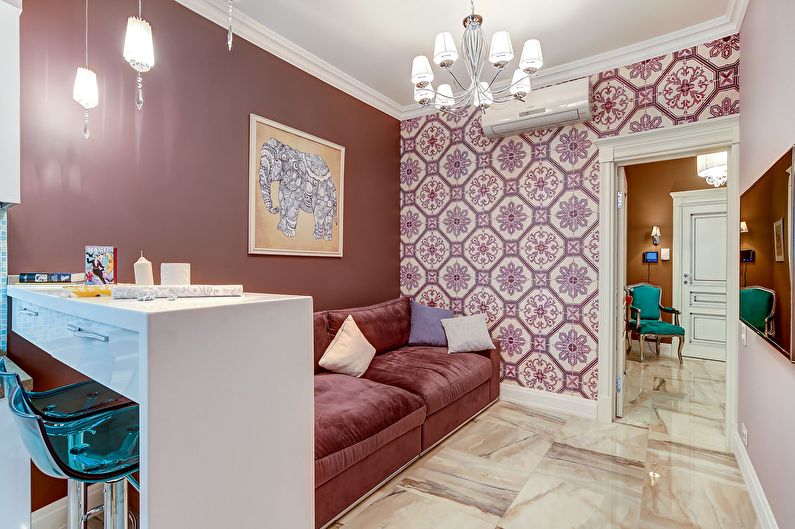
Wallpaper for a small living room
The main goal of designing a small living room in a Khrushchevka apartment is to make the room appear more spacious. To achieve this, wallpapers should be light-colored, plain, with a small neat pattern and vertical accents. Adding depth can be done with photo inserts and optical 3D effects.
If there are light-reflecting elements on the wallpaper (glitter, silk patterns, fluorescent coatings), good lighting is necessary, as they will add additional radiance to the room.
It is better to avoid large images, voluminous reliefs, and bright contrasts on the walls in a small living room.
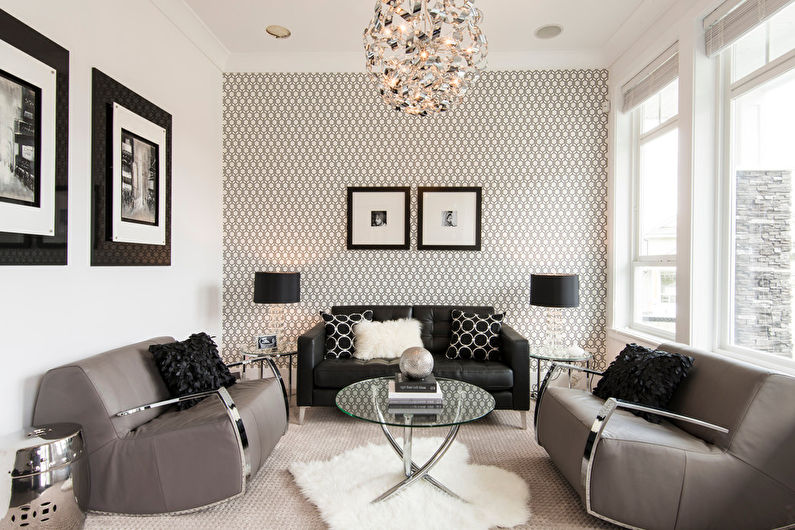
Wallpaper for living room – photo ideas
In our photo collection, you can see various wallpaper options for the living room interior. Visual examples of the best designer solutions will help you make a choice quickly and decorate even the smallest living room with exquisite taste.
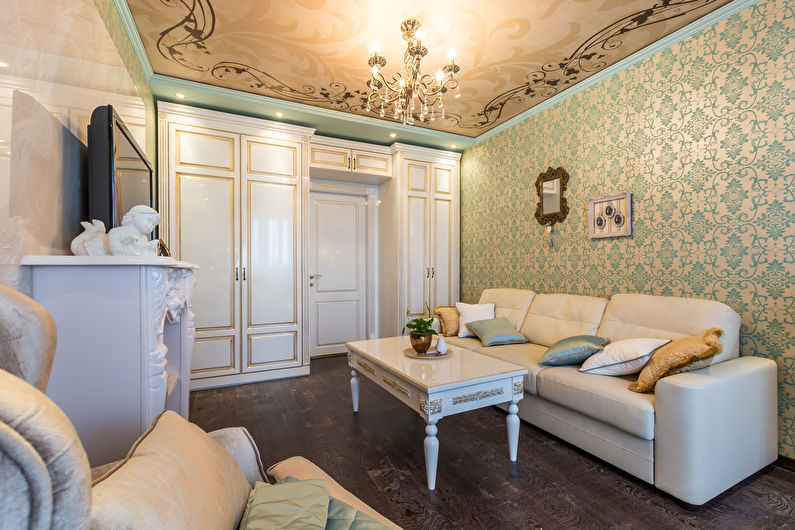
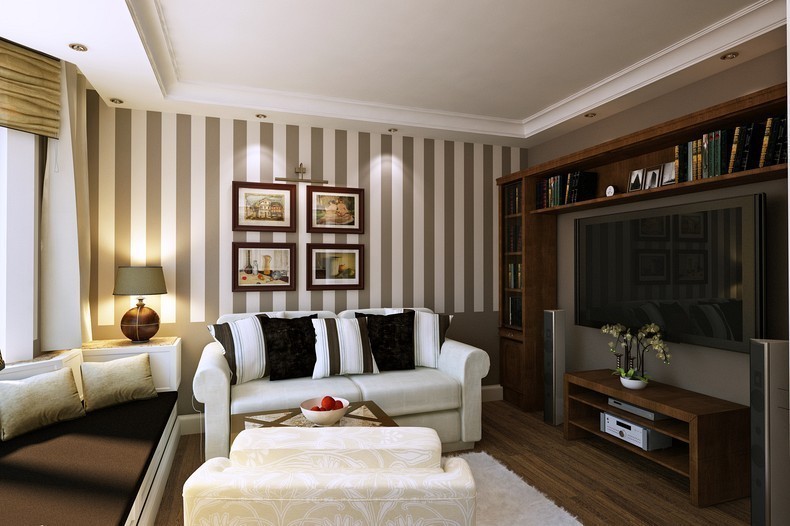
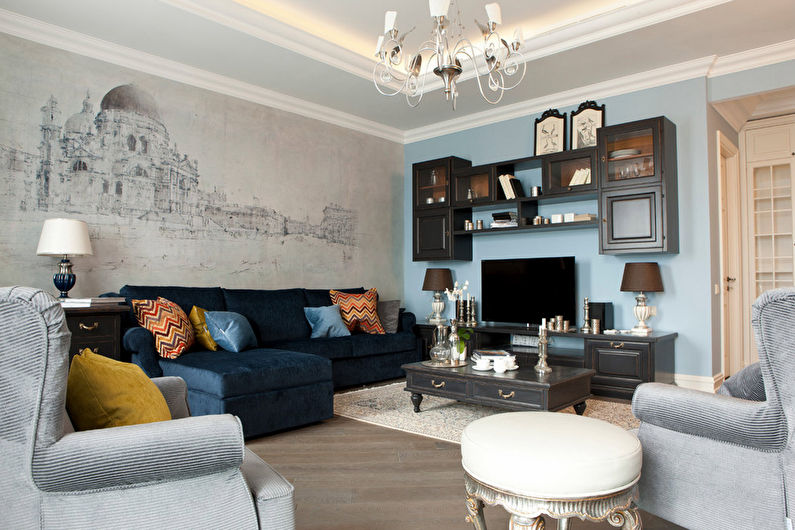
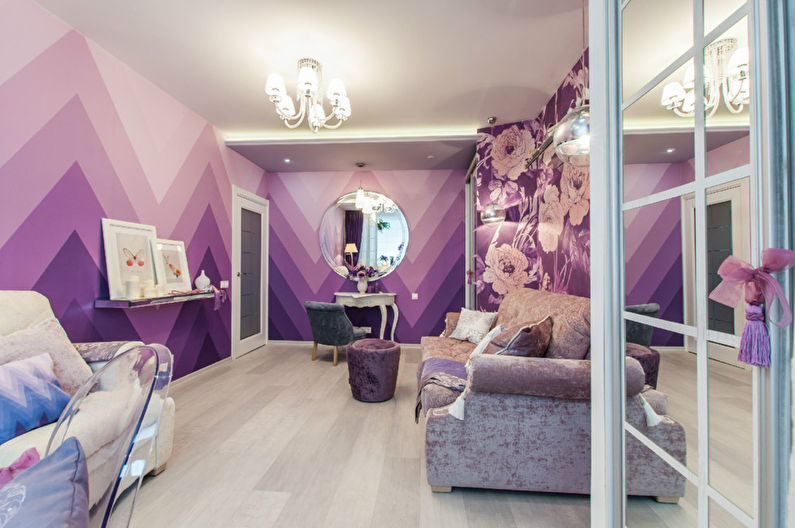

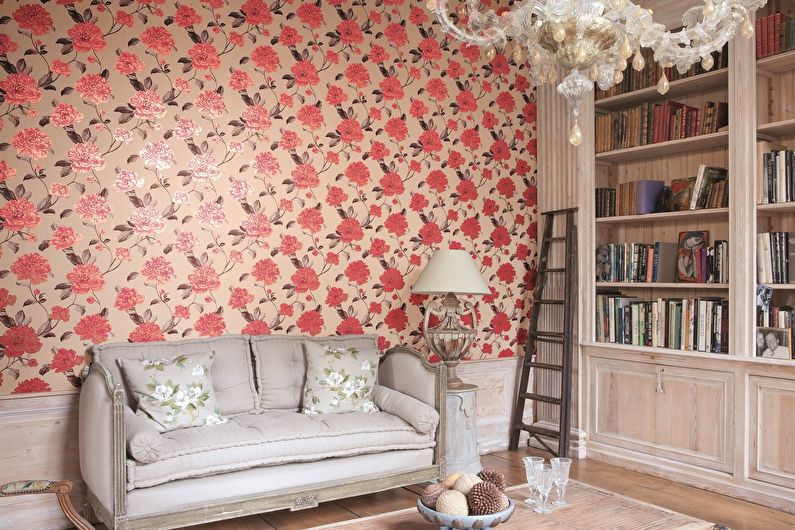

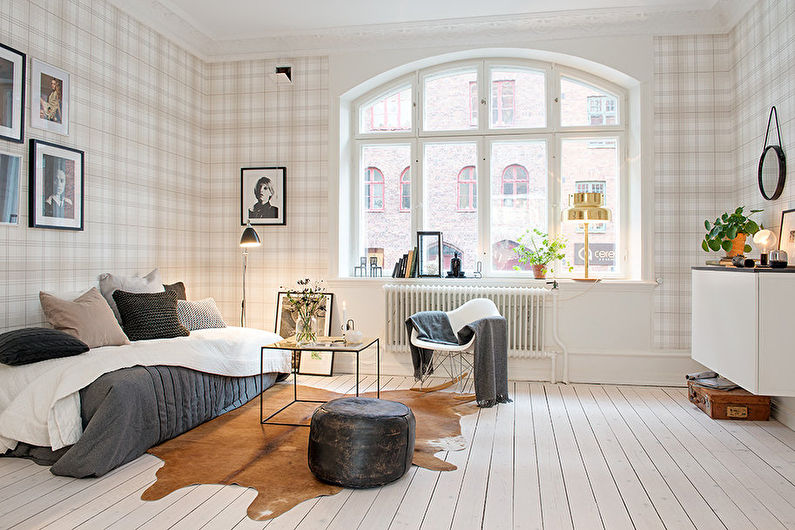
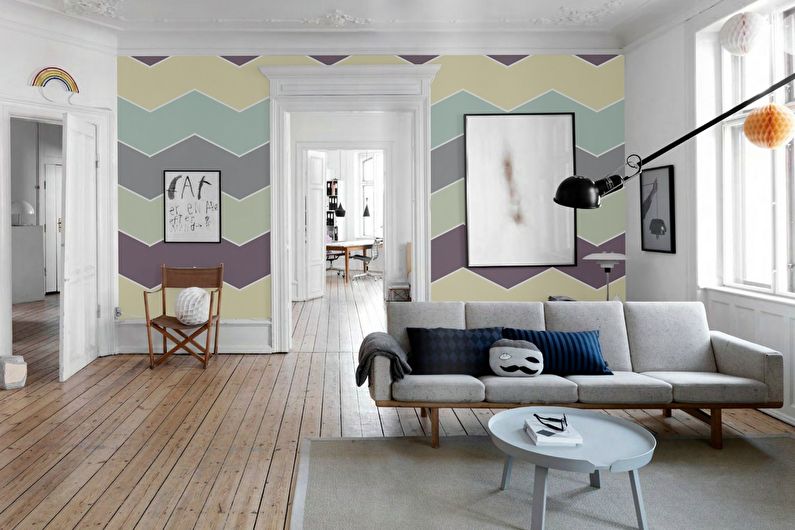


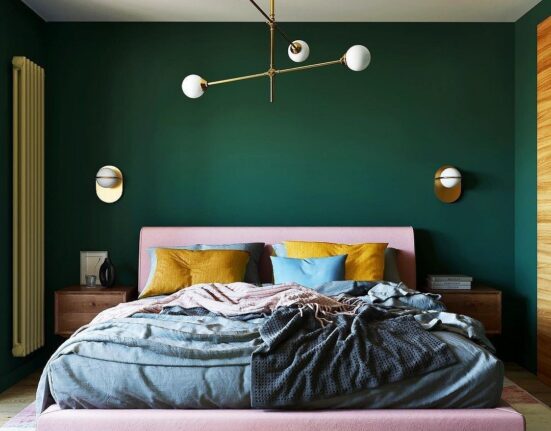

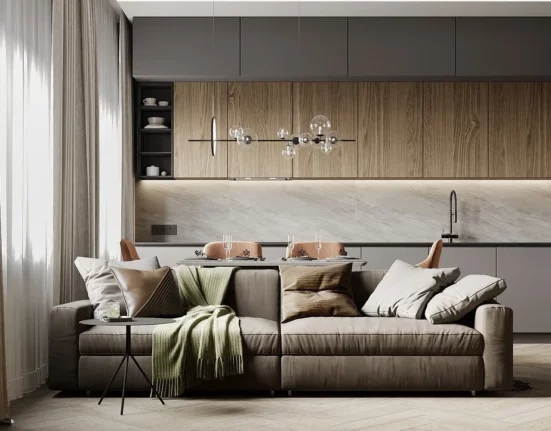
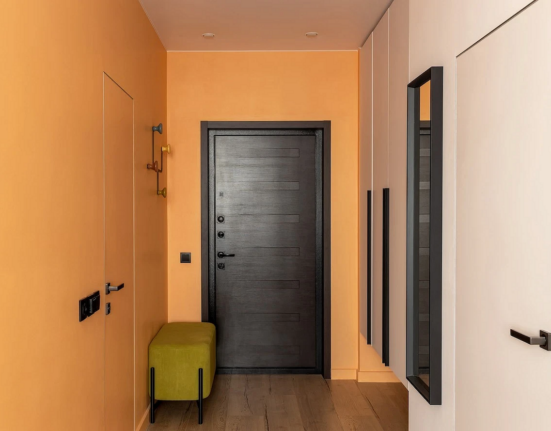

Leave feedback about this